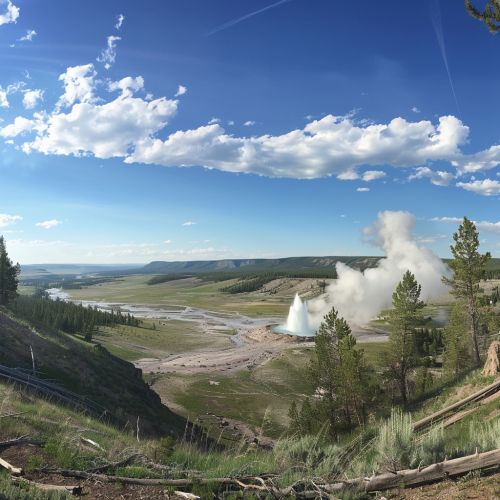Yellowstone National Park
Overview
Yellowstone National Park is a United States National Park located in the western states of Wyoming, Montana, and Idaho. It was established by the U.S. Congress and signed into law by President Ulysses S. Grant on March 1, 1872. Yellowstone was the first national park in the U.S. and is also widely held to be the first national park in the world.


Geography
The park spans an area of 2,219,791 acres, larger than the states of Rhode Island or Delaware. It includes lakes, canyons, rivers, and mountain ranges. Yellowstone Lake is one of the largest high-elevation lakes in North America and is centered over the Yellowstone Caldera, one of the largest active volcanic systems in the world.
Geology
Yellowstone National Park is known for its geothermal activity and large number of geysers, such as the famous Old Faithful. The park sits atop the Yellowstone Caldera, a volcanic hotspot. The caldera is considered an active volcano; it has erupted with tremendous force several times in the last two million years.
Biodiversity
Yellowstone is widely considered to be the finest megafauna wildlife habitat in the U.S. It is home to hundreds of species of mammals, birds, fish, and reptiles, many of which are endangered or threatened. The vast forests and grasslands also include unique species of plants.
History
The human history of the park begins at least 11,000 years ago when Native Americans began to hunt and fish in the region. During the construction of the post office in Gardiner, Montana, in the 1950s, an obsidian projectile point of Clovis culture was found that dated from approximately 11,000 years ago.
Tourism
Yellowstone National Park is a popular destination for tourists, with over four million visitors each year. The park has numerous recreational opportunities, including hiking, camping, boating, fishing, and sightseeing. Paved roads provide close access to the major geothermal areas as well as some of the lakes and waterfalls.
